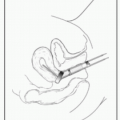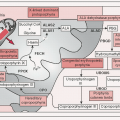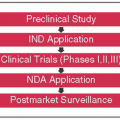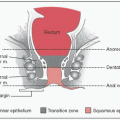Cancer of Unknown Primary
Cancer of Unknown Primary
CANCER OF UNKNOWN PRIMARY (CUP)
Jean K. Lee
Lewis J. Kampel
Overview & Epidemiology
CUP, or occult 1° tumors: Histologically proven malignant tumors w/o an identified
1° site. Pts
w/CUP have a wide variety of presentations
w/usu poor prognosis; median survival of 6-9
mos (
Eur J Cancer 2003;39:1990)
31000 cases of
CUP diagnosed yearly in US; 4-5% of all
CA
Genetic basis: 2.8% cases of occult
1° found to be familial, w/occurrence of lung, kidney, &
CRC in families
1° tumor site found in <30% of pts
w/CUP
Clinical Presentation
Pts may
p/w sx related to site of
mets.
Multiple sites involved in >50% pts often including liver, lungs, bones, & LNs. Patterns of
met sites unreliable to determine
1° site
Favorable features include
mets limited to
LN, poorly differentiated carcinoma w/midline distribution, & resectable tumors.
Unfavorable features include male gender, pathological
dx of adenocarcinoma
w/mets involving multiple organs, nonpapillary malignant ascites, cerebral
mets, adenocarcinoma w/lung, pleural, or bone lesions
Pathology
Classified into 5 major subtypes: Well- or moderately differentiated adenocarcinoma (60%), poorly differentiated adenocarcinoma, or undifferentiated carcinoma (29%),
SCC (5%), poorly differentiated malignant neoplasm (cannot be further classified by light microscopy, 5%), & well- or poorly differentiated
NETs (1%)
Multiple chromosomal abnormalities & overexpression implicated:
Ras, BCL2 (40%
CUP cases),
HER2, p53 (53%)
Immunohistochemistry (IHC)
Initial Diagnostic Workup
Get Clinical Tree app for offline access










